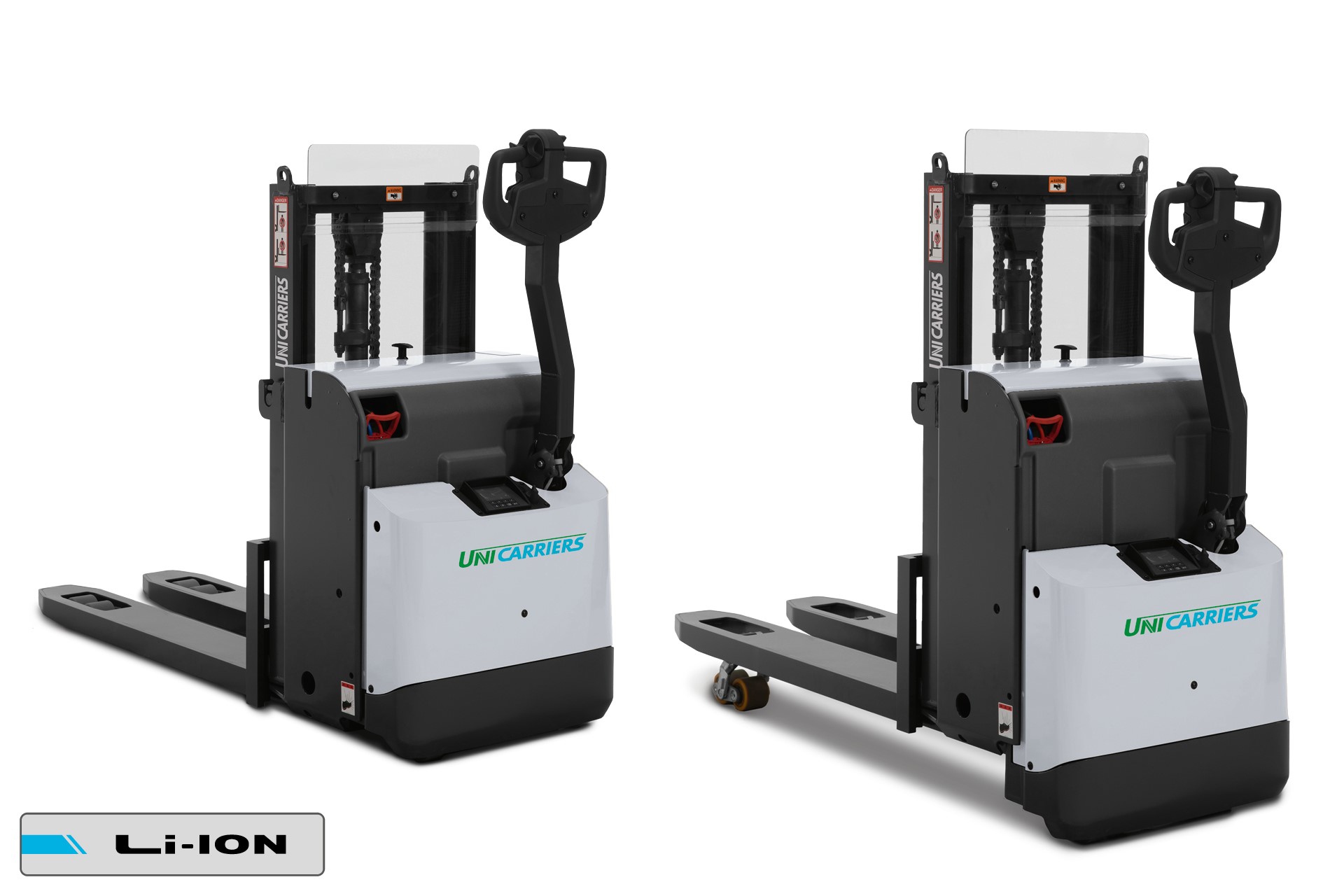UniCarriers has launched an upgraded series of compact pedestrian stackers with state-of-the-art features designed to enhance operator comfort and productivity. As the latest innovations in the world-class UniCarriers portfolio of market-leading stackers, the CSW125 compact pedestrian stacker and CDW125 compact pedestrian stacker for double pallet handling are ideally suited to cross-docking applications.
These compact pedestrian stackers excel at shop replenishment, order picking and short-distance internal transportation in environments such as warehouses, supermarkets and production areas, says the manufacturer. The narrow chassis of just 660mm allows easy working in tight spaces while achieving lift heights of up to 2090mm. Due to its low weight, the single stacker CSW125 is especially valuable if working on mezzanine floors.
The CSW125 and CDW125 stackers now feature a new advanced ergonomic tiller head that offers greater operator comfort thanks to large rocker buttons optimally placed for better access. The robust and impact-resistant tiller head is IP65 rated against water and dust damage and is completely weatherproof to withstand all conditions when working indoors and out. This minimises maintenance and downtime to ensure lower total cost of ownership. The tiller arm is designed to reduce stress on the operator’s arms and hands enabling them to stay comfortable and focused over long shifts.
The compact pedestrian stackers have also been upgraded with a new speed regulated electric proportional valve for controlled lifting/lowering and smooth handling. This supports maximum throughput and efficiency as operators can quickly, confidently and safely handle goods.
UniCarriers says it is dedicated to delivering high-performance trucks built to meet the ever-increasing market demand for efficiency and adaptability. That’s why the CSW125 and CDW125 compact pedestrian stackers come with a range of new options including an advanced multi-function display, battery creep, an audible battery level warning, service alarm, automatic log off, and the ability to revert to low speed at log off. Pedestrian stackers can play a vital role in every part of the pallet handling chain from intake to dispatch, and to increase uptime, UniCarriers utilises a modular build using fewer components for faster repairs and servicing. It’s all part of UniCarriers full-maintenance site support.






